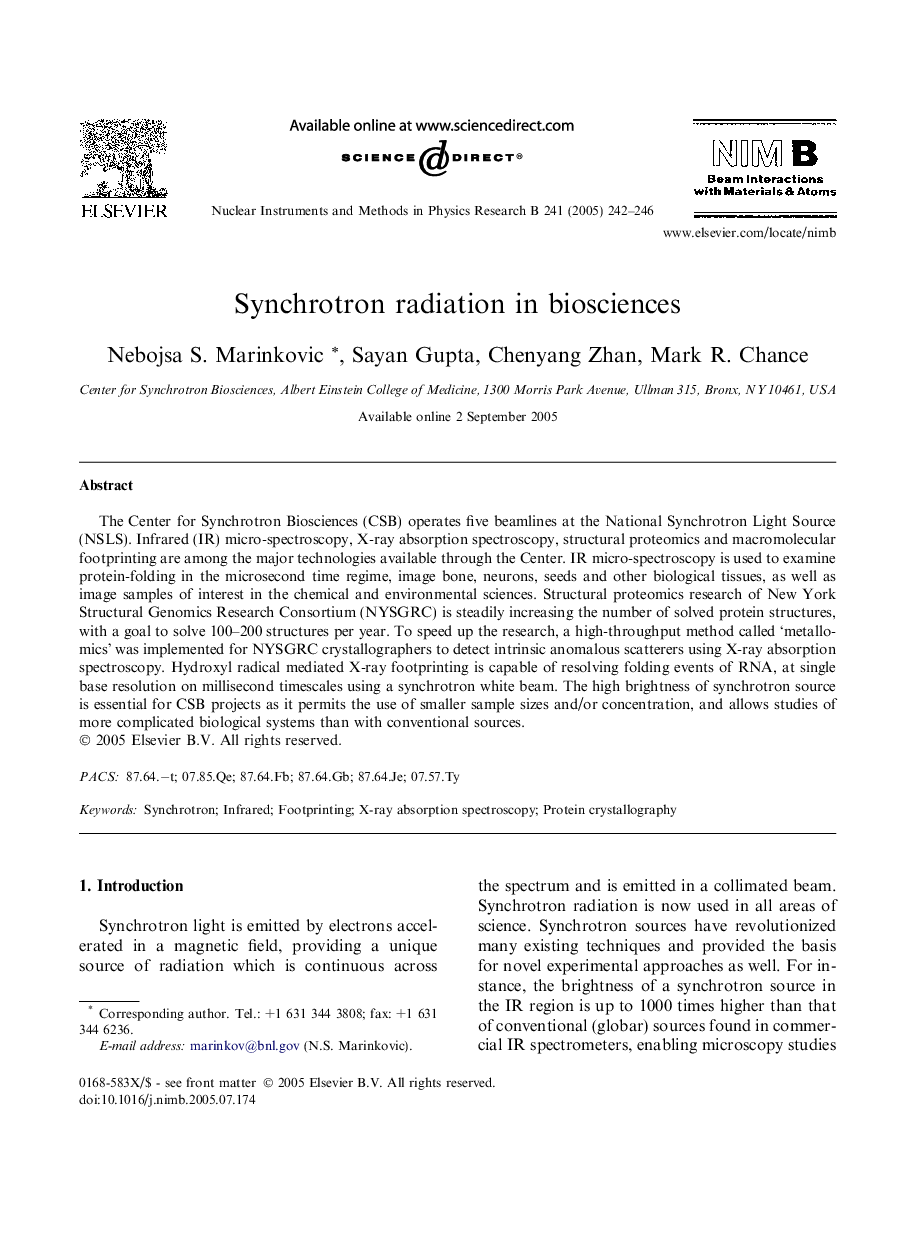| Article ID | Journal | Published Year | Pages | File Type |
|---|---|---|---|---|
| 9817441 | Nuclear Instruments and Methods in Physics Research Section B: Beam Interactions with Materials and Atoms | 2005 | 5 Pages |
Abstract
The Center for Synchrotron Biosciences (CSB) operates five beamlines at the National Synchrotron Light Source (NSLS). Infrared (IR) micro-spectroscopy, X-ray absorption spectroscopy, structural proteomics and macromolecular footprinting are among the major technologies available through the Center. IR micro-spectroscopy is used to examine protein-folding in the microsecond time regime, image bone, neurons, seeds and other biological tissues, as well as image samples of interest in the chemical and environmental sciences. Structural proteomics research of New York Structural Genomics Research Consortium (NYSGRC) is steadily increasing the number of solved protein structures, with a goal to solve 100-200 structures per year. To speed up the research, a high-throughput method called 'metallomics' was implemented for NYSGRC crystallographers to detect intrinsic anomalous scatterers using X-ray absorption spectroscopy. Hydroxyl radical mediated X-ray footprinting is capable of resolving folding events of RNA, at single base resolution on millisecond timescales using a synchrotron white beam. The high brightness of synchrotron source is essential for CSB projects as it permits the use of smaller sample sizes and/or concentration, and allows studies of more complicated biological systems than with conventional sources.
Keywords
Related Topics
Physical Sciences and Engineering
Materials Science
Surfaces, Coatings and Films
Authors
Nebojsa S. Marinkovic, Sayan Gupta, Chenyang Zhan, Mark R. Chance,
